

Matt Campbell
2025 Porsche 911 Carrera T review
5 Days Ago
BMW's flagship, the 7 Series, is well-known for being a testbed of new ideas and design. The latest iteration continues this trend.

Contributor
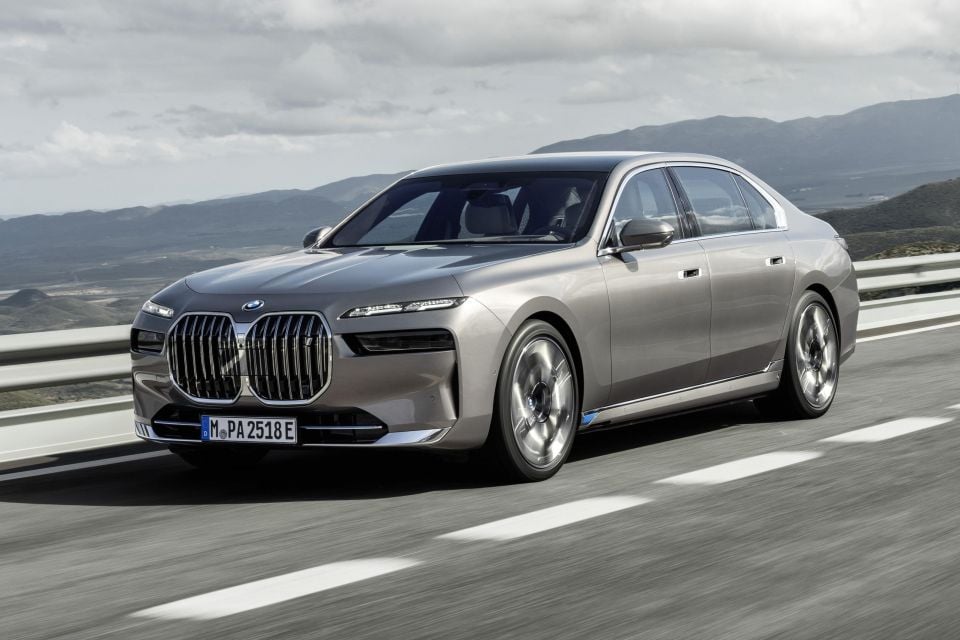

Contributor
The 7 Series has long held the title of BMW’s flagship car, and it continues to be the most expensive and luxurious model the Bavarian brand makes.
Its range-topping status also means that it has long been known as a testbed for new technology and design ideas, especially in the 2000s onwards.
The fourth-generation E65 7 Series, sold from 2001-2008, for example, introduced a number of innovations including the iDrive infotainment system, complete with its trademark jog-wheel controller.
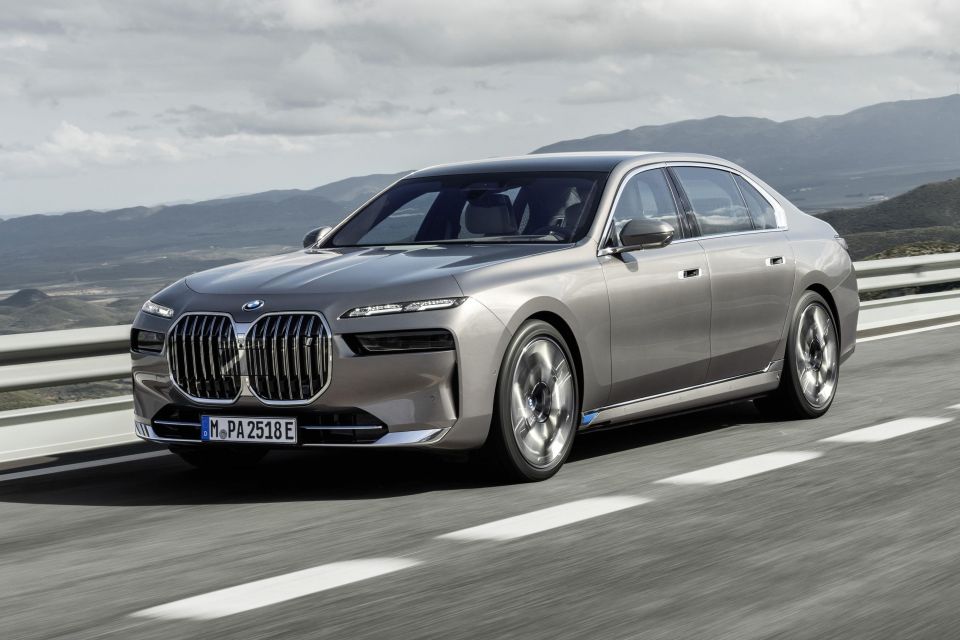
More famously, it marked the debut of Chris Bangle’s ‘flame surfacing’ design language, complete with elements such as the famous Bangle butt, where the edge of a prominent boot lid was shaped to rise above the rear flanks of the car.
Flame surfacing was subsequently extended in various interpretations throughout the range, with models such as the 5 Series, 6 Series and Z4 featuring especially expressive versions of this design ethos.
The latest 7 Series, known as the seventh-generation G70 model, marks arguably the biggest step change in the lineup since the E65, introducing an entirely new design language, and a raft of class-leading technology and interior design features.
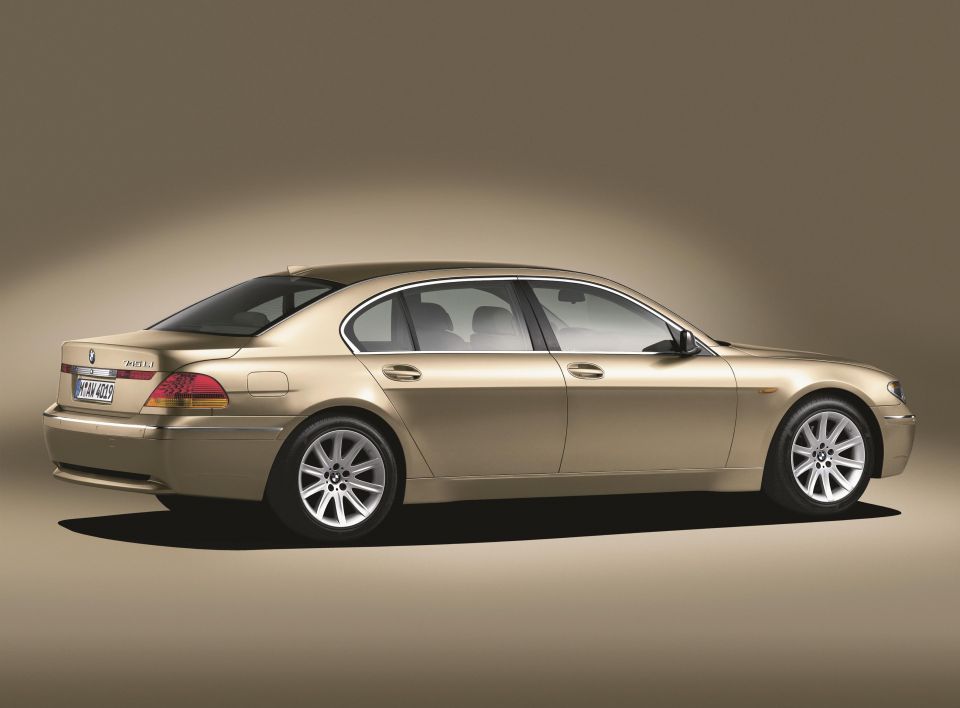
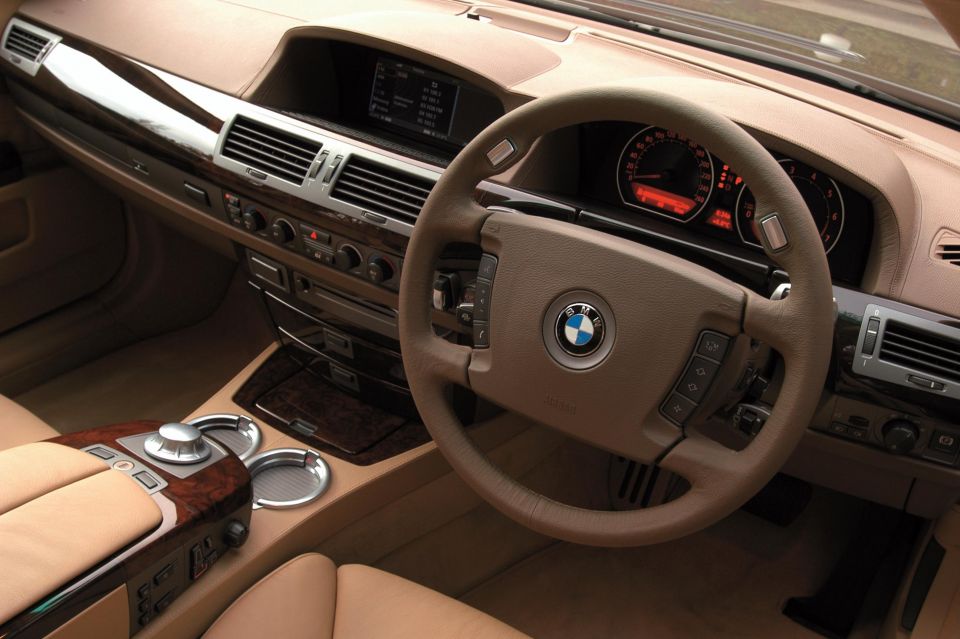
BMW describes the new 7-Series as ringing in a new era of Forwardism, or what it calls “the joy of seeing and feeling the future before it has been created, and continually challenging convention to create a better tomorrow”.
Practically, this is glamourous marketing speak for the brand giving itself the freedom to be perhaps a little edgier and adventurous with its styling, and less tied down by traditional notions of elegance, conservatism and subtlety.
Of course, any change in design or styling must not be to the detriment of sales of the model, but from a business perspective, it is arguably more likely that BMW’s adoption of Forwardism will accelerate the model’s growth.
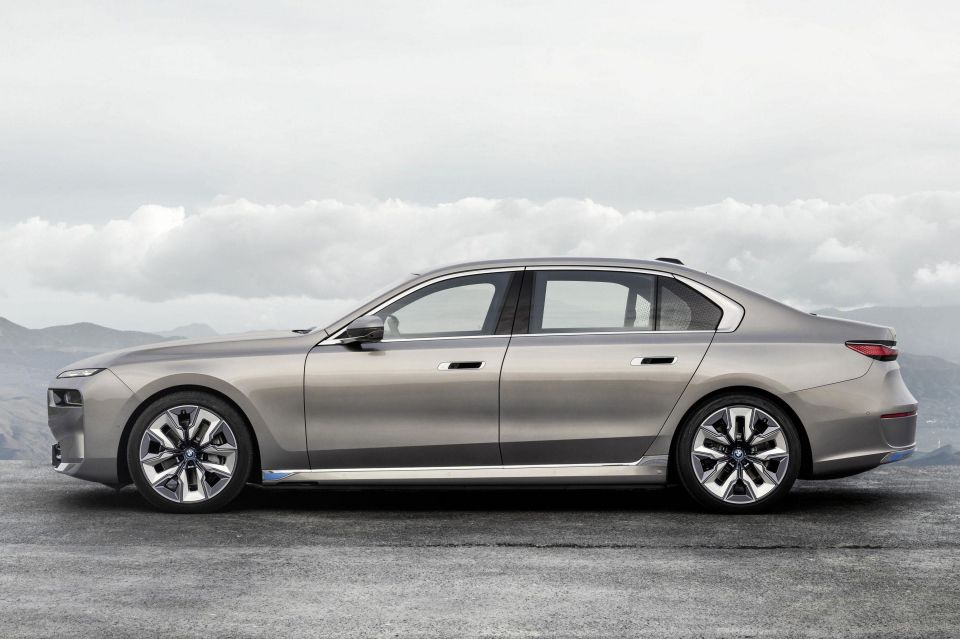
Key to this is understanding the vehicle’s context. The most significant market for this vehicle will be China, where the traditional three-box sedan body style retains an effervescent popularity, and more distinctive designs that command presence are desired, as they enable the elite classes in Chinese society to demonstrate their status and wealth.
Forwardism, as applied to the new 7 Series, facilitates this by enabling the 7 Series to have a more architectural approach to its design.
Rather than the preceding two generations (G11 and F01) that took a softer, more organic approach to their styling, the latest 7 Series utilises an almost Brutalist, more monolithic shape that has an absence of unnecessary lines and a more angular approach to various design details.
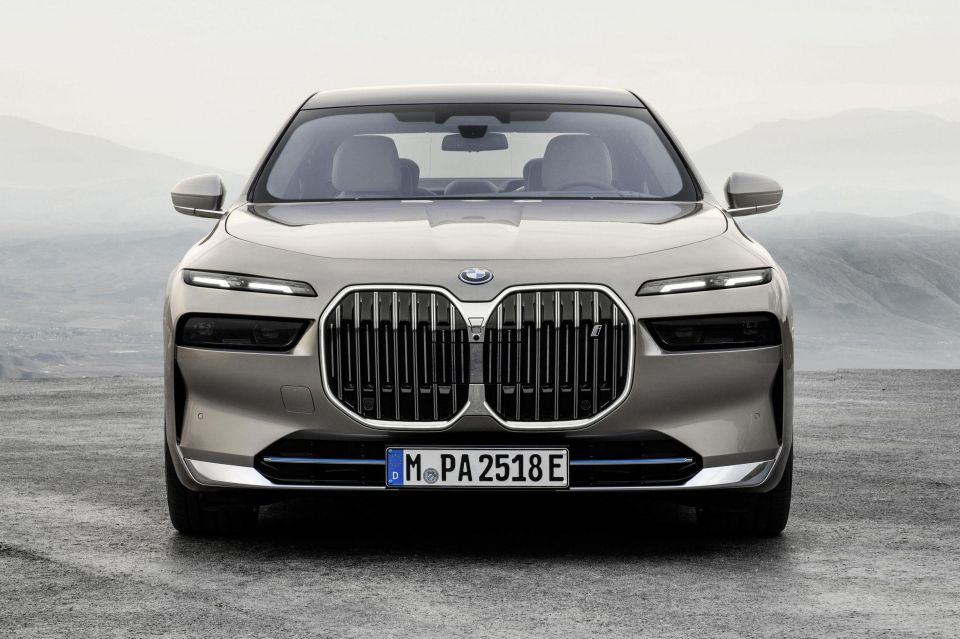
Several elements of the exterior design highlight this monolithic approach.
Foremost is the more upright front-end design, best evidenced by shape of the grille. Compared to the G11 7 Series, the latest model has a slightly narrower, but more elongated front grille with a more polygonal outline, that works with the new clamshell bonnet to allow a more vertical front fascia.
The split headlight design further supports this. The preceding G11 (especially facelifted models revealed in 2019) enlarged the grille whilst slimming down the headlights, creating a squinting effect.
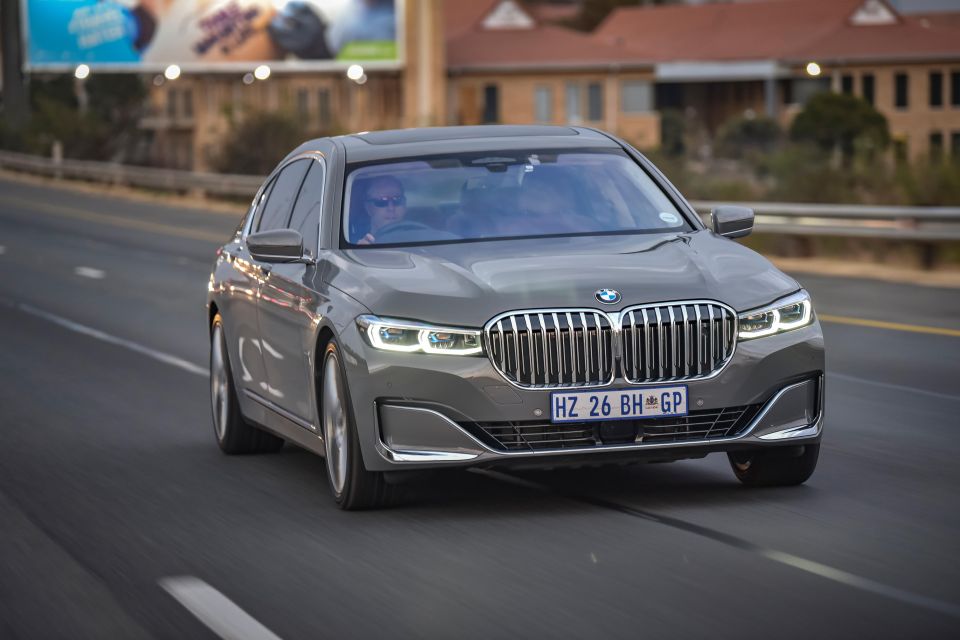
In contrast, the new 7 Series resolves this problem by aligning the DRLs towards the top of the grille, and having a separate panel to contain the low and high-beam headlights that is positioned towards the middle of the front grille, but not joined to it.
This creates a much more balanced, refined impression compared to its predecessor, which was widely critiqued for having an oversized and over-styled grille not in keeping with the rest of the car.
M Sport variants in particular feature a lower front bumper in a contrast colour to the rest of the body, which has allowed BMW to create distinct front wings that not only create a more aggressive impression than the standard specification (and what is available on the i7), but also lead an observer’s eyes towards the imposing grille.
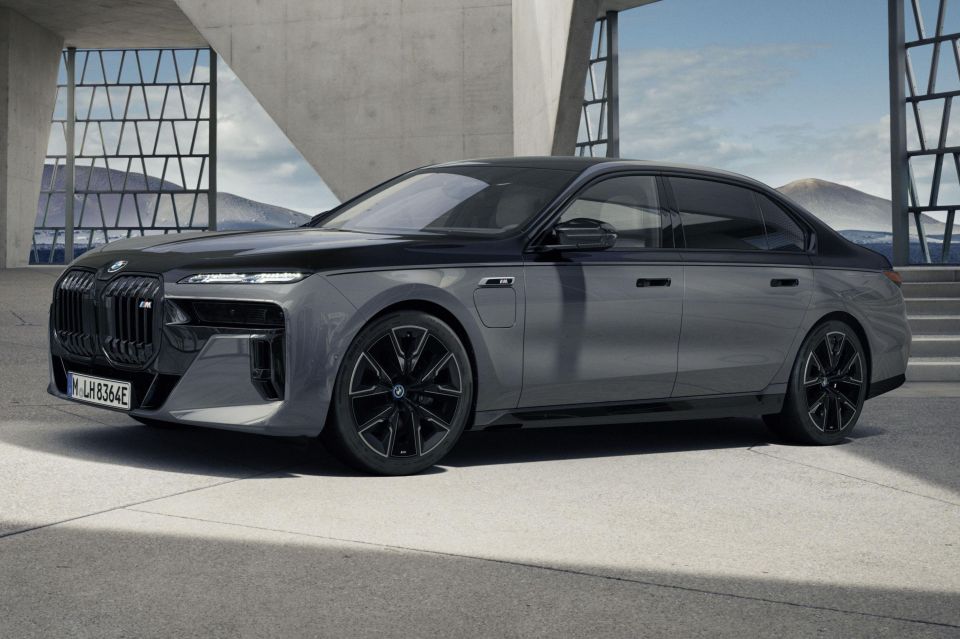
The side profile continues the more stately impression created by the front by keeping character lines to a minimum. Apart from a strong shoulder line beneath the glasshouse that stretches from the top of the front DRL to the edge of the tail light, there is an absence of any curves or other lines, creating a monolithic impression.
Notably, the new 7 Series also does away with unnecessary ornamentation such as the L-shaped chrome line running along the lower side skirts of its predecessor. Flush door handles further enhance this impression of a clean, smooth profile.
An interesting element here is the trademark BMW Hofmeister kink, or the distinctive curve of the rear window trim that has featured on almost every BMW product in recent memory (except perhaps models such as the i3, i8 and iX).
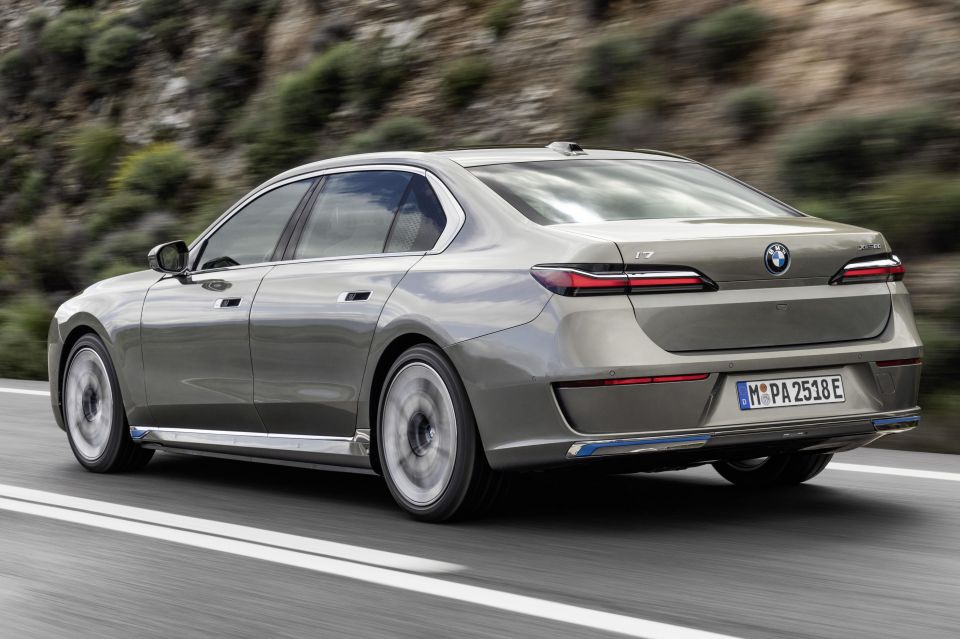
On the new 7 Series, the kink constitutes a separate trim piece, rather than forming part of the door, and takes on a more angular interpretation to closely resemble the 90s E32 and E38 7 Series.
The tail continues to feature BMW’s L-shape graphic to further accentuate the width of the vehicle, but unlike its predecessor, is a clean design without the presence of a separate full-width light bar.
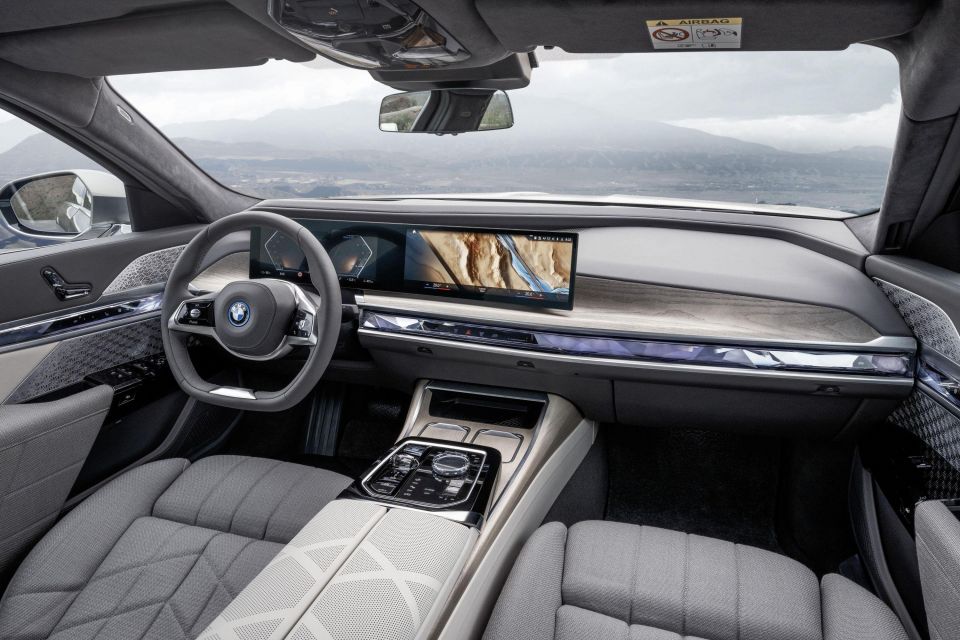
In line with its Forwardism design ethos, BMW’s primary objective with the interior of the new 7 Series was to create a harmonious combination of materials and technology that provides a spacious, airy feeling befitting of the car’s focus on passenger comfort.
At the front of the car, the 7 Series adopts the freestanding, horizontally oriented BMW Curved Display first introduced on the iX SUV, but pairs it to a curved, gently flowing trim piece that recreates the atmosphere of a Scandinavian lounge when optioned with an open-pore matte wood finish.
Most interesting is the use of what BMW calls an ‘Interaction Bar’ to combine functions including ambient lighting, certain operating controls and notifications for systems such as the Safe Exit alert into one panel.
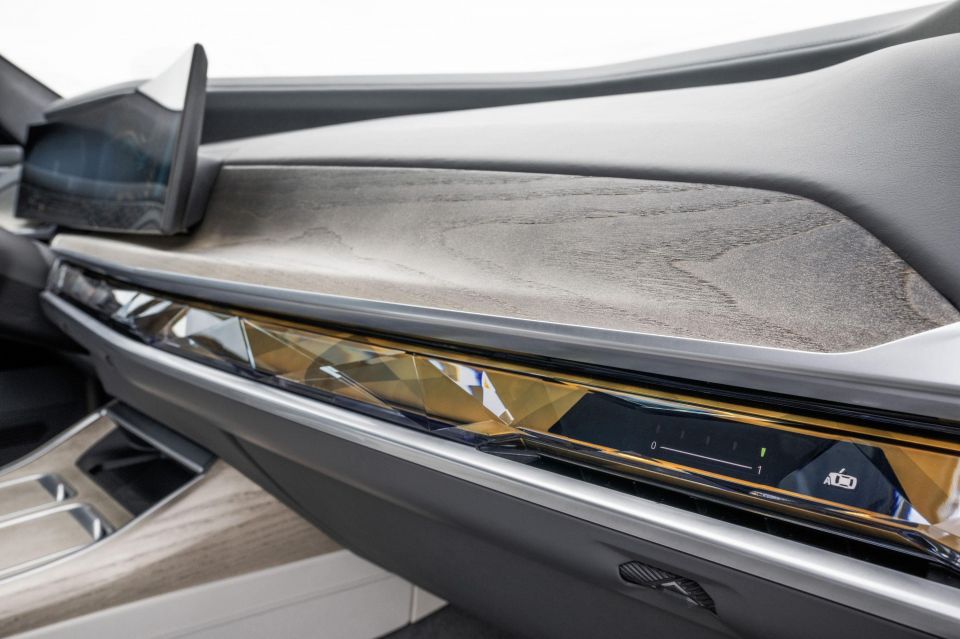
By also including very slimline vents for the air-conditioning system, the Interaction Bar further cleans up and visually lowers the dashboard, further helping to create a calm ambience.
The materials available contribute further to a warm and inviting interior. Wool is known for its climate sensitive properties, in staying cool during summer and relatively warm during winter, and the cashmere variety is available as a seat upholstery option.
Fitted as standard is an improved, softer version of BMW’s artificial leather, now going by the Veganza brand name rather than Sensatec.
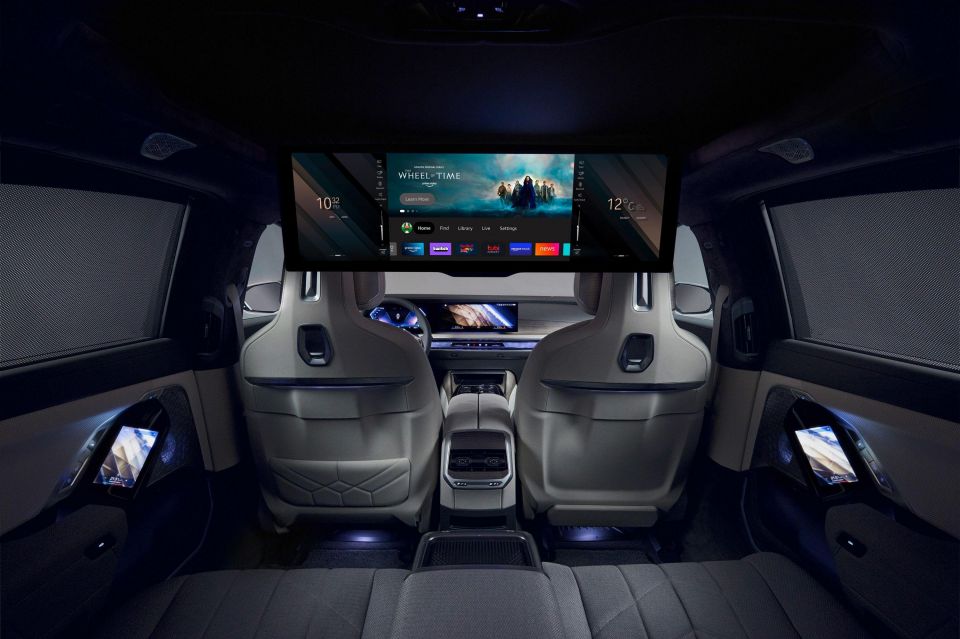
For the rear passengers, arguably the standout feature is BMW’s Theatre Screen. A motorised 31 inch 8K ultrawide display that elegantly folds out from the roof, this is paired with a Bowers & Wilkins 4D surround sound system to offer the ultimate in-car movie experience, with the display also featuring Amazon Fire TV built-in for access to various streaming platforms.
Many luxury cars have some sort of additional display built into the rear of the centre console to control the climate control system.
However, in what is perhaps a more elegant touch, BMW has instead fitted the rear door armrests with a smartphone style 5.5 inch display for passengers to individually control various functions including climate, BMW’s My Modes and operation of the theatre screen.
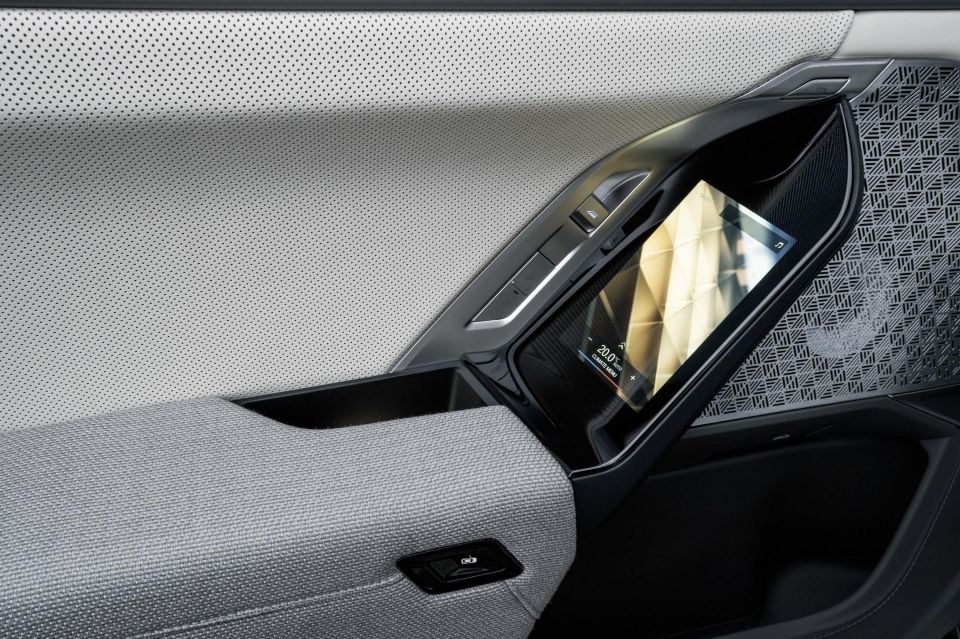
Similarly to models such as the X5 and X7, the new 7 Series is also available with what BMW calls its ‘Sky Lounge’ panoramic sunroof, that also offers embedded LEDs to provide an ambient lighting feature within the roof.
On the outside, this is perhaps the first 7 Series available with contrast two-tone paint across the lineup, allowing customers to personalise their cars further and create an even more regal appearance.
Meanwhile, as introduced on the X6, the new 7 Series is also available with the Iconic Glow illuminated grille feature, that may be a popular option in certain markets.
Dig these weekend design pieces? More can be found here:
MORE: Design Exposé – Hyundai Ioniq 5 MORE: Design Exposé – Renault Mégane E-Tech Electric MORE: Design Exposé – Kia Sportage MORE: Design Exposé – Volkswagen Golf R MORE: Design Exposé – Porsche Carrera GT MORE: Design Exposé – Hyundai i20 N MORE: Design Exposé – BMW M4 (G82) MORE: Design Expośe – Mercedes-AMG GLE63 S


Matt Campbell
5 Days Ago


James Wong
4 Days Ago


Max Davies
3 Days Ago


Josh Nevett
2 Days Ago


Josh Nevett
1 Day Ago
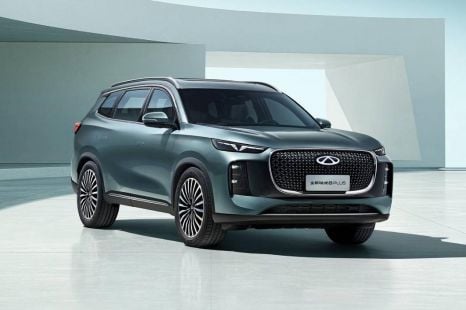

William Stopford
13 Hours Ago